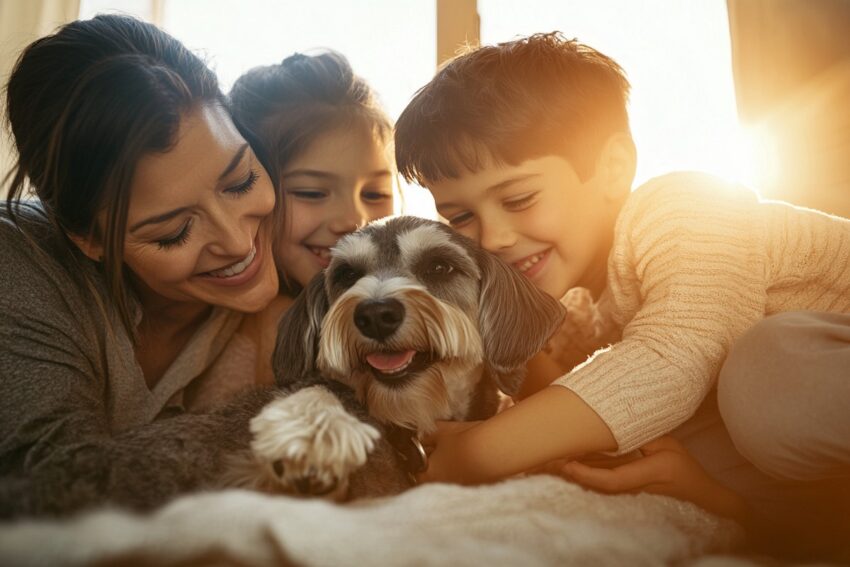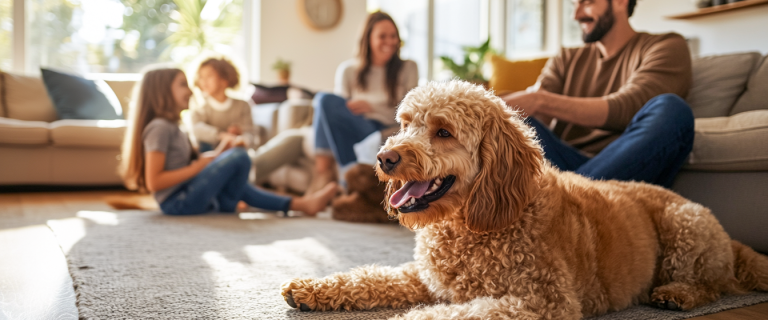You want a dog that makes you feel safe—but not one that makes your neighbors, your kids’ friends, or your cat feel unsafe.
The best guard dog breeds aren’t just about muscle or bark volume. They’re about balance: fiercely loyal, easily trainable, and calm enough to coexist with real-life chaos like playdates, barking from the TV, or a roaming toddler with a juice box.
Yes, you can have a protective dog and a family-friendly home. Here’s how to choose the right one.
TL;DR – Choosing the Right Guard Dog for Real-Life Families
- • Guard dogs: Don’t need to be aggressive—they need to be alert and controllable.
- • Trainability: Your #1 safety asset in homes with kids or other pets.
- • Small yards? No problem. Many protective breeds thrive with mental work, not just space.
💡 Why it’s worth your scroll: Keep reading for breed breakdowns, space-saving tips, and guest-friendly training advice.
What Makes a Great Family Guard Dog?
| Trait | Why It Matters for Families |
|---|---|
| Loyalty | Bonds deeply with household members—becomes “one of you.” |
| Trainability | Learns quickly, responds to commands—even under stress. |
| Stable Temperament | Less likely to overreact or escalate normal chaos. |
| Moderate Size | Big enough to deter, small enough to manage indoors. |
💬 “The best guard dogs know when to bark—and when to chill.”
Family Bonus Traits:
✅ Kid Tolerance: Not just non-aggressive, but truly patient
✅ Low Prey Drive: Safer around cats or smaller dogs
✅ Adaptable Energy: Can be active or happily hang on the couch
Pro Tip:
Many of the most trusted protective breeds don’t look scary—they act confident and calm. That’s what deters intruders and keeps your household in harmony.
Best Guard Dog Breeds for Families (with Kids, Pets, or Small Yards)
These breeds strike the balance between fierce loyalty and gentle presence—ideal for families who want protection without sacrificing safety or snuggles.
Boxer

If there were an award for “family clown in a bodyguard’s suit,” the Boxer would win every time. This breed has the heart of a playful companion but the instincts of a natural protector. Always alert yet never unnecessarily aggressive, Boxers tend to thrive in busy households where laughter, noise, and activity are part of the daily routine.
- Temperament: Goofy, affectionate, naturally alert
- Energy Level: High—needs daily exercise and play
- Kid Compatibility: Excellent—loves kids and thrives on family interaction
- Other Pets: Generally good, especially with early exposure
- Training Needs: Benefits from structured obedience training early on
- Ideal Home: Active households with fenced yards or frequent outdoor time
Doberman Pinscher
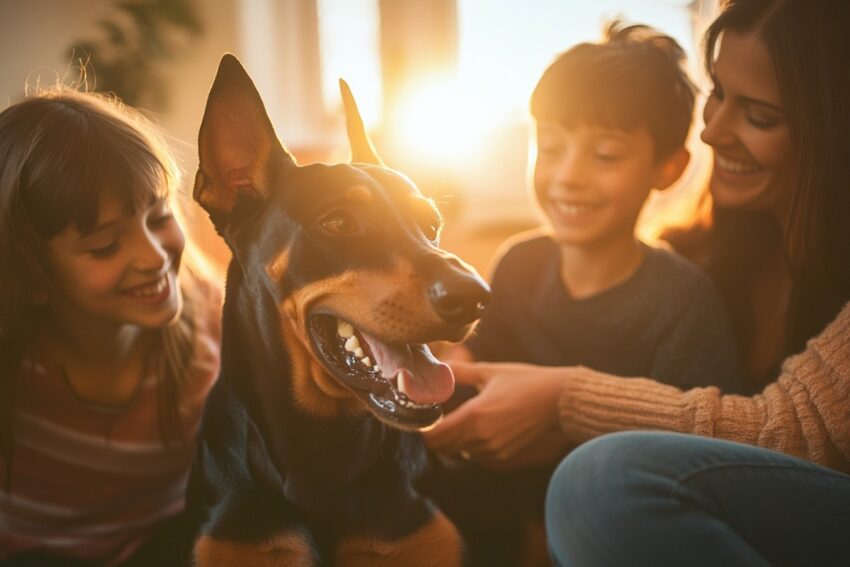
Sleek, striking, and incredibly intelligent, the Doberman has long been one of the most trusted guardians in the dog world. Their loyalty runs deep, and when properly trained and socialized, they combine watchful protection with a steady, confident presence that puts families at ease.
- Temperament: Loyal, emotionally tuned-in, protective
- Energy Level: High—thrives on mental and physical engagement
- Kid Compatibility: Good with respectful kids + early training
- Other Pets: Compatible with socialization
- Training Needs: Responds well to consistency and calm leadership
- Ideal Home: Confident owner, routine-based household, yard access
Standard Schnauzer
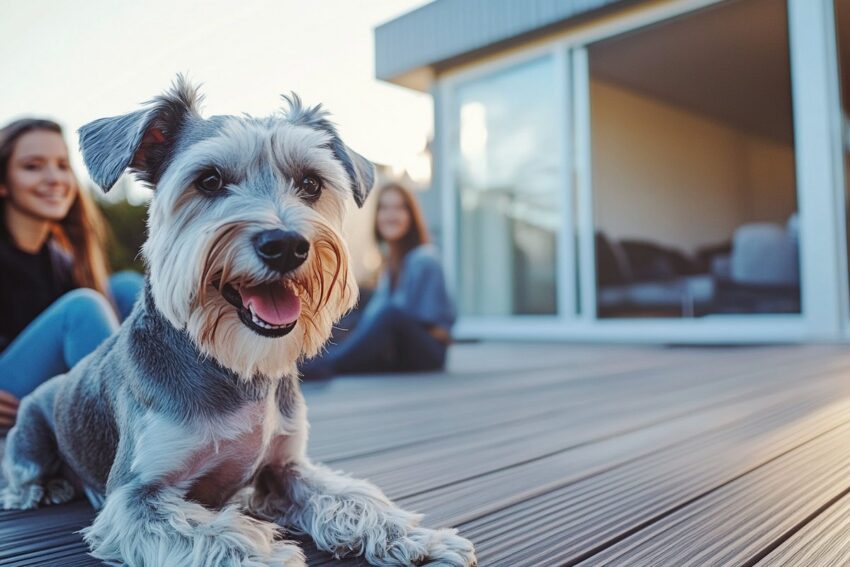
With their distinguished beard and no-nonsense expression, Standard Schnauzers bring equal parts charm and vigilance to family life. They’re natural watchdogs who seem to know the difference between everyday commotion and a true threat, making them excellent for homes that want security without the constant barking.
- Temperament: Watchful, smart, loyal without being clingy
- Energy Level: Moderate—loves activity but settles indoors
- Kid Compatibility: Great with older children who follow boundaries
- Other Pets: Good with familiar pets, may chase if untrained
- Training Needs: Excels with tasks—loves puzzles and mental work
- Ideal Home: Apartment or small yard with structured routine
American Staffordshire Terrier
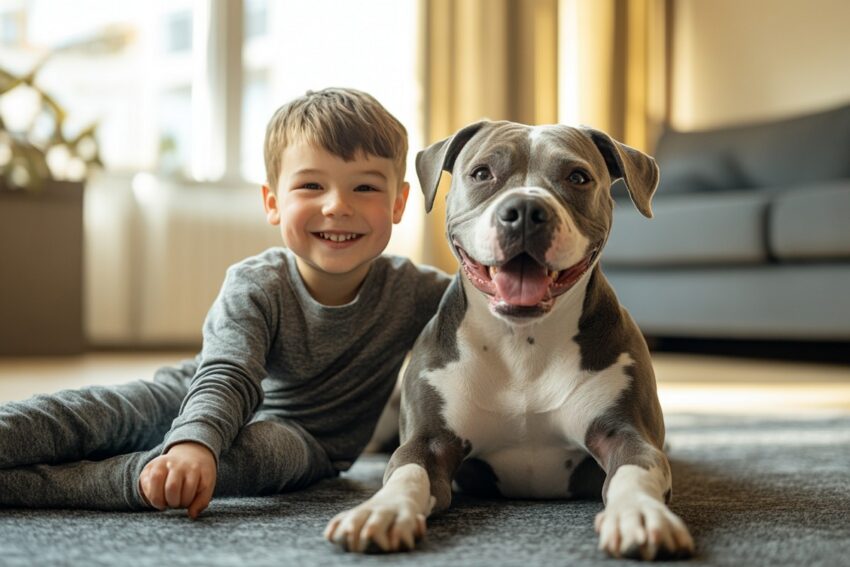
- Temperament: Loving, people-oriented, surprisingly soft
- Energy Level: Medium—equally into fetch and nap time
- Kid Compatibility: Very good when supervised early; loyal to their “pack”
- Other Pets: Can be selective—needs thoughtful introductions
- Training Needs: Benefits from confident leadership and rewards-based methods
- Ideal Home: Experienced owner with consistent boundaries
You May Also Like
Curious about how the American Staffordshire Terrier compares to the Pit Bull? Read our in-depth comparison here.
Belgian Malinois (Experienced Owners Only)
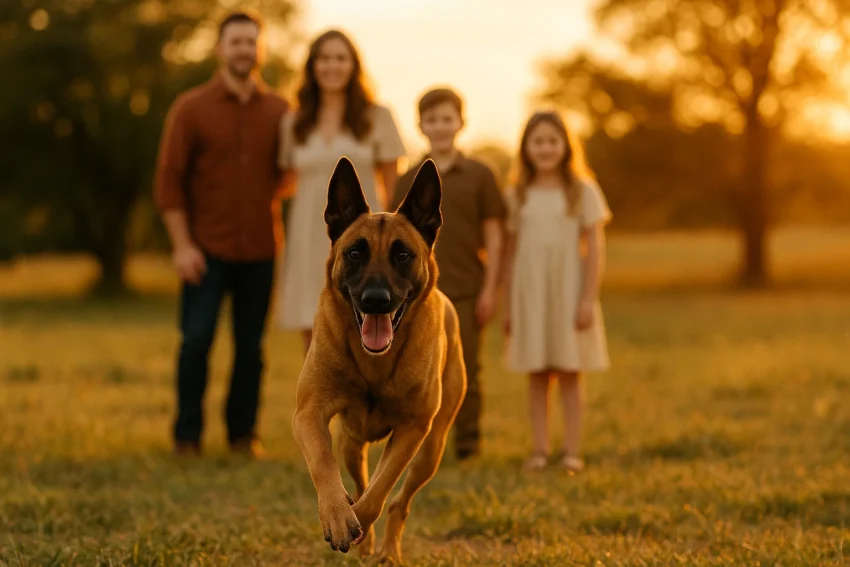
The Belgian Malinois is a top choice for police and military work—and that should tell you a lot about their drive, focus, and energy levels. In the right hands, they’re unmatched in skill and loyalty, but they’re not a casual family pet. Without an experienced owner ready to commit to daily training, exercise, and mental challenges, their intensity can quickly become overwhelming.
- Temperament: Ultra-loyal, focused, intense
- Energy Level: Very high—requires daily mental + physical outlets
- Kid Compatibility: Best with older kids who respect boundaries
- Other Pets: May be challenging—early socialization is a must
- Training Needs: Ongoing, high-engagement training required
- Ideal Home: High-energy household with time, space, and structure
German Shepherd
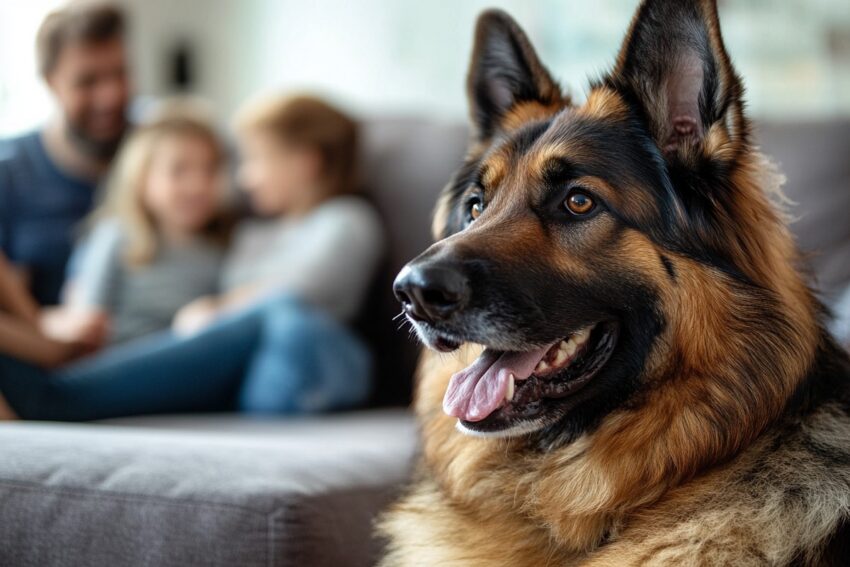
Renowned for their versatility and devotion, German Shepherds have served as everything from police K-9s to gentle therapy dogs. In a family setting, they excel when given both a job to do and plenty of affection, blending a protective nature with an eagerness to please.
- Temperament: Protective, steady, family-devoted
- Energy Level: High—needs daily activity and stimulation
- Kid Compatibility: Excellent with training + social exposure
- Other Pets: Good with supervision and early guidance
- Training Needs: Strong work ethic—thrives with jobs and commands
- Ideal Home: Families with space, time, and experience
Miniature Bull Terrier
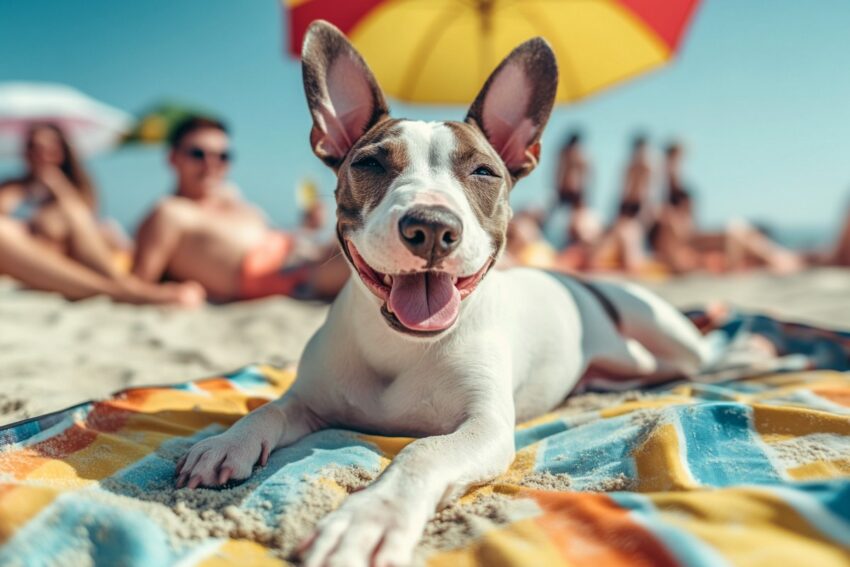
Small in stature but big in personality, the Miniature Bull Terrier is an entertaining mix of spunk, curiosity, and determination. While not the most obvious choice for a guard dog, their fearless nature and strong bond with their people make them surprisingly effective at sounding the alarm when something’s not right.
- Temperament: Bold, charming, a little mischievous
- Energy Level: Moderate—enjoys play, then flops out
- Kid Compatibility: Solid with older or calm children
- Other Pets: Can coexist well if introduced young
- Training Needs: Consistent structure—easily distracted
- Ideal Home: Smaller homes looking for big personality + watchful instinct
Guard Dogs in Small Spaces: It’s Possible
Think you need a giant yard or private acreage to have a great guard dog? Not at all.
Many of the best guard dog breeds are surprisingly adaptable—as long as their minds are engaged and their routines are consistent.
What Matters More Than Space
- Structure over square footage: Guard breeds thrive when they know what to expect.
- Mental work = mental calm: A tired mind is a peaceful protector.
- Small yards work: Even a patio or hallway can be part of a daily “patrol” if paired with proper training.
Ways to Work Their Minds (Even in a Small Home)
- Scent Games: Hide kibble or treats around the house for them to “hunt.”
- Puzzle Feeders: Turn mealtime into brain training.
- Window Patrol: Let them “guard” visually from a favorite perch—just don’t let it become obsessive.
- Short, structured walks: Two or three 15-minute walks can beat a single long one.
Pro Tip:
Integrating a Guard Dog with Kids or Pets
Bringing home a protective breed doesn’t have to feel like adding a bouncer to your living room. With smart prep and consistent habits, your new guard dog can become a loyal protector and a loving companion to everyone in your home—furry or human.
For Families with Kids:
- Supervise Early Interactions: Even the gentlest dog can get startled by grabby little hands.
- Teach Dog Manners to Kids: Show them how to pet respectfully, avoid hugging tightly, and never disturb a resting dog.
- Create Dog-Only Spaces: Crates, beds, or safe zones help your pup decompress when family life gets loud.
💬 “If your kids have a timeout corner, your dog should too.”
For Multi-Pet Homes:
- Neutral First Introductions: Meet on-leash outdoors or in neutral zones to reduce territorial behavior.
- Don’t Rush It: Keep first interactions short and positive—no free roaming until trust builds.
- Feed Separately (at first): Prevent food guarding by using different areas for mealtimes.
- Reward Peaceful Coexistence: Reinforce every calm interaction with praise and treats.
🩺 Vet Tip: Some breeds may never love other animals—but most can learn to peacefully cohabitate with the right support.
Integration Golden Rule:
Train the dog, manage the environment, teach the kids.
Do those three things, and your guard dog becomes not just your protector—but a calm, trusted member of your family.
Red Flags to Watch For in Protective Dogs
Protective is good. Possessive, anxious, or unpredictable? Not so much.
Even the best guard dog breeds can become problematic if their instincts aren’t channeled properly. Here’s how to spot the difference between healthy protectiveness—and behavior that needs course-correcting.
Do's & Don'ts for Family-Friendly Guard Dogs
- Calm alerting (one bark, then quiet on command)
- Confidence around visitors after a proper introduction
- Obedient recall and redirection even during excitement
- Gentle curiosity with kids, not tense hovering
- Excessive barking at every sound, movement, or person
- Resource guarding of toys, food, or even family members
- Lunging at the door or fence when someone approaches
- Growling or posturing at guests, even with no threat present
You Don’t Need a Scary Dog to Feel Safe
You don’t have to choose between a cuddle buddy and a home protector. The truth is, the most effective guard dogs aren’t the loudest or the biggest—they’re the ones who know their family, trust their training, and step up only when it truly counts.
If you’re looking for a guard dog to protect your loved ones, you’re already a great dog owner. Because you’re not just thinking about security—you’re thinking about safety, connection, and harmony.
Author
-
Hey there, I'm Jamey, and I've been an animal lover for as long as I can remember. Growing up on a 50-acre farm in Ontario, Canada, I was surrounded by a menagerie of furry friends, from beloved cats and dogs to goats, horses, cows, and even chickens. Now, I call Victoria, British Columbia my home, and my heart belongs to my adorable Balinese cat, Milo. When I'm not editing blog posts here at DogVills, I enjoy helping solo entrepreneurs with their passion projects and online marketing. Over the years, I've also ventured into creating and selling various blogs.
View all posts
